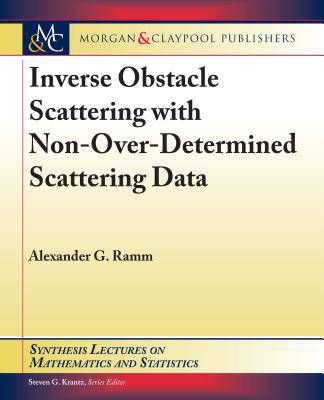
- Retrait gratuit dans votre magasin Club
- 7.000.000 titres dans notre catalogue
- Payer en toute sécurité
- Toujours un magasin près de chez vous
- Retrait gratuit dans votre magasin Club
- 7.000.0000 titres dans notre catalogue
- Payer en toute sécurité
- Toujours un magasin près de chez vous
Inverse Obstacle Scattering with Non-Over-Determined Scattering Data
Alexander G RammDescription
The inverse obstacle scattering problem consists of finding the unknown surface of a body (obstacle) from the scattering (;; ), where (;; ) is the scattering amplitude, $; ² is the direction of the scattered, incident wave, respectively, ² is the unit sphere in the ℝ3 and k > 0 is the modulus of the wave vector.
The scattering data is called non-over-determined if its dimensionality is the same as the one of the unknown object. By the dimensionality one understands the minimal number of variables of a function describing the data or an object. In an inverse obstacle scattering problem this number is 2, and an example of non-over-determined data is ( ): = (; ₀; ₀). By sub-index 0 a fixed value of a variable is denoted.
It is proved in this book that the data ( ), known for all in an open subset of ², determines uniquely the surface and the boundary condition on . This condition can be the Dirichlet, or the Neumann, or the impedance type.
The above uniqueness theorem is of principal importance because the non-over-determined data are the minimal data determining uniquely the unknown . There were no such results in the literature, therefore the need for this book arose. This book contains a self-contained proof of the existence and uniqueness of the scattering solution for rough surfaces.
Spécifications
Parties prenantes
- Auteur(s) :
- Editeur:
Contenu
- Nombre de pages :
- 69
- Langue:
- Anglais
- Collection :
Caractéristiques
- EAN:
- 9781681735887
- Date de parution :
- 12-06-19
- Format:
- Livre broché
- Format numérique:
- Trade paperback (VS)
- Dimensions :
- 190 mm x 235 mm
- Poids :
- 136 g

Les avis
Nous publions uniquement les avis qui respectent les conditions requises. Consultez nos conditions pour les avis.






